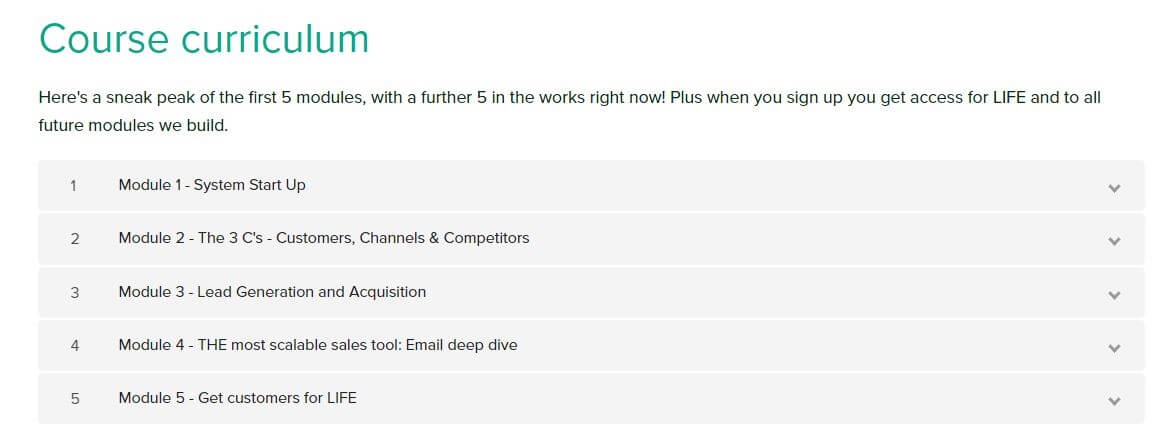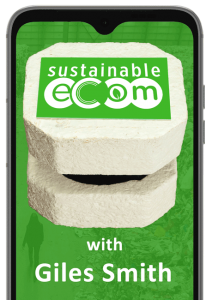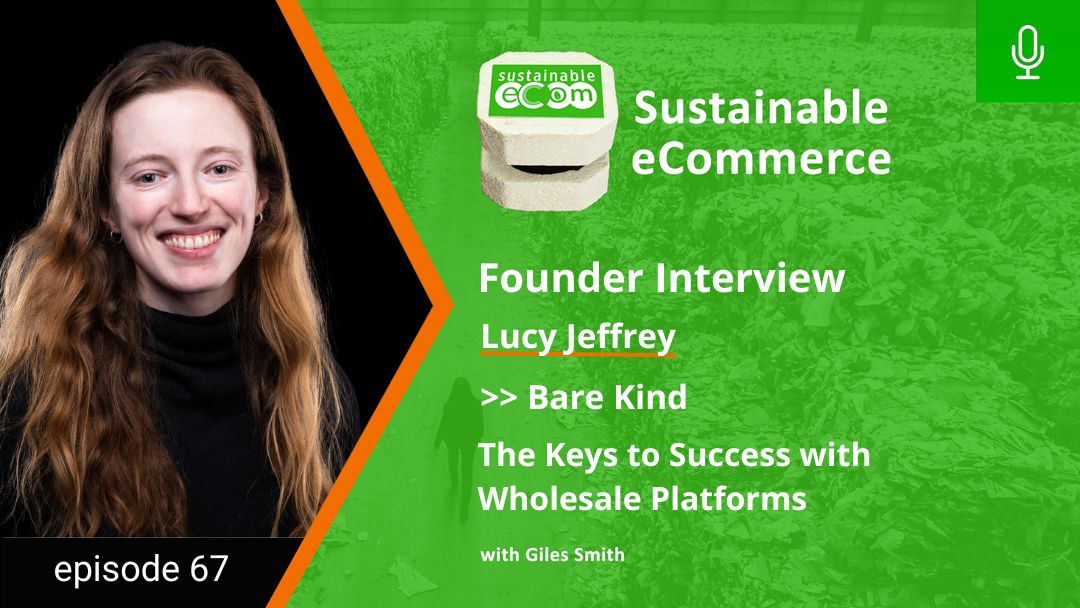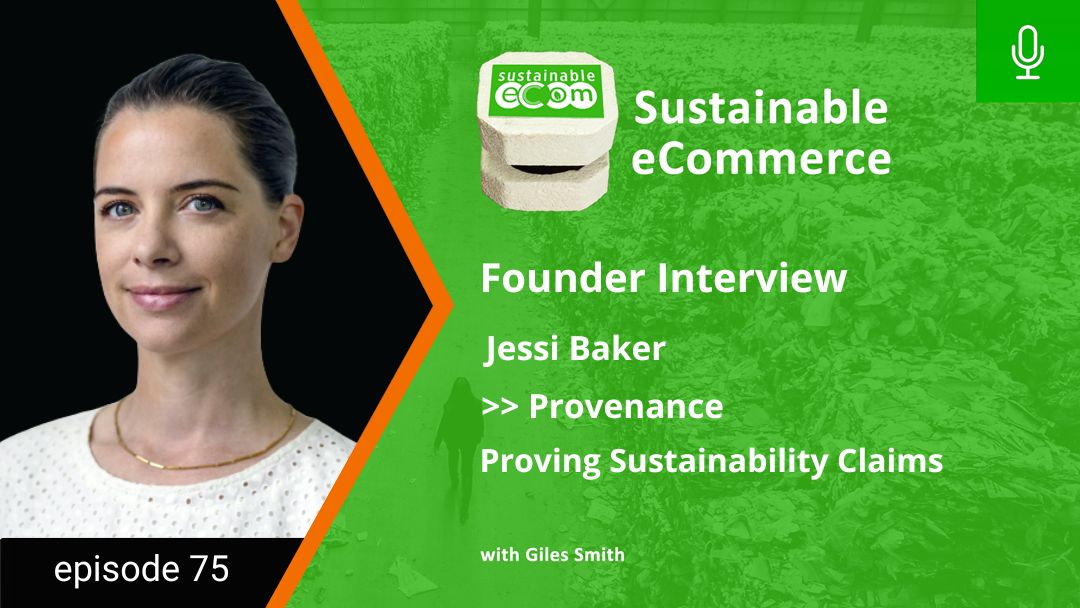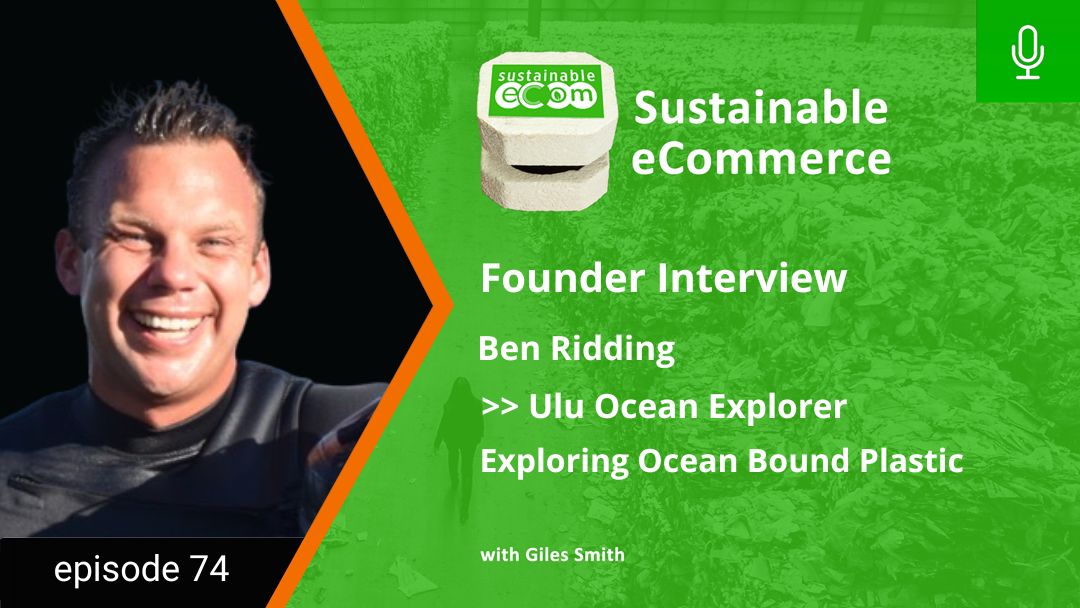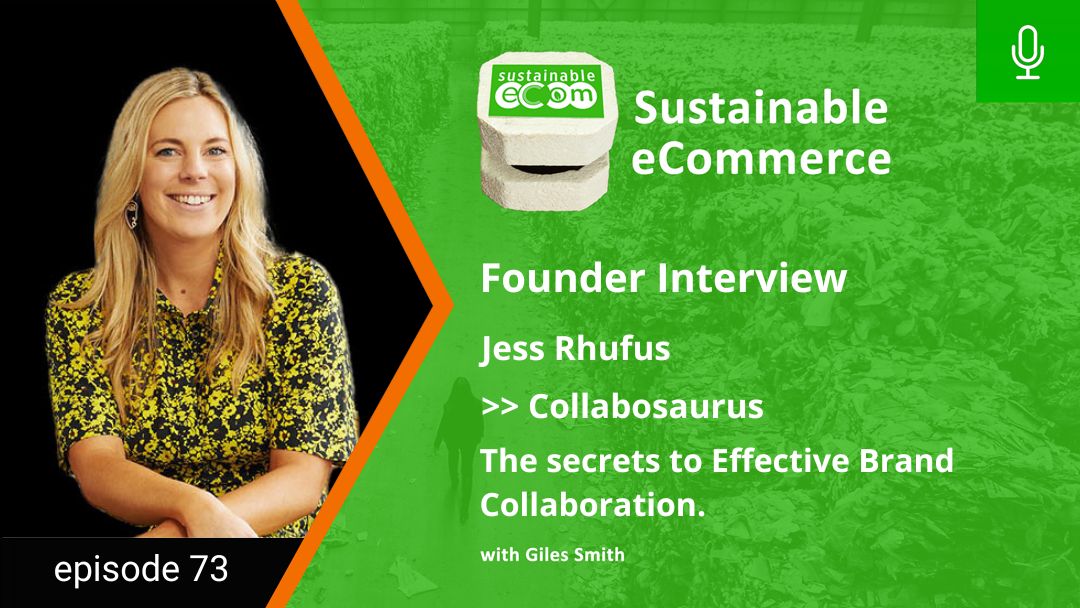Sustainable Ecommerce Podcast Episode 67
Last week we heard the first part of our conversation with Lucy Jeffrey from Bare Kind, and we explored how she communicates impact, which included some really important lessons for all impact-entrepreneurs. If you haven’t already listened, I recommend you backtrack and listen to that episode first, because it sets us up for today’s show.
But the reason I asked Lucy to join me was that in just 12-18 months, she has been phenomenally successful in driving growth through wholesale marketplaces, bringing on over 700 stores.
With profitable growth being trickier than ever for eCommerce brands this year, especially sustainable brands with an inherently higher Cost of Goods, I wanted pick Lucy’s brains and give you access to some of the key insights she’s picked up on how to make that work.
To quickly summarise where we got to in the last episode, Lucy’s brand has been growing very well, with 10X growth in 2021 and then doubling into 2022. But, largely due to the increasing cost of acquisition together with increases in retail shipping costs, their growth in 2022 came without increased profit.
Bare Kind have a largely giftable product set that is heavily seasonal, 60% of their revenue is tied to Christmas sales, so to smooth that out as well as find a more profitable growth strategy, she’s turned to wholesale, specifically through wholesale marketplaces like Faire.
In this episode we dive into more details about Lucy’s strategy so that you can replicate her success. We learn about how to get the most from wholesale marketplaces, how to price products for success, and much, much more!
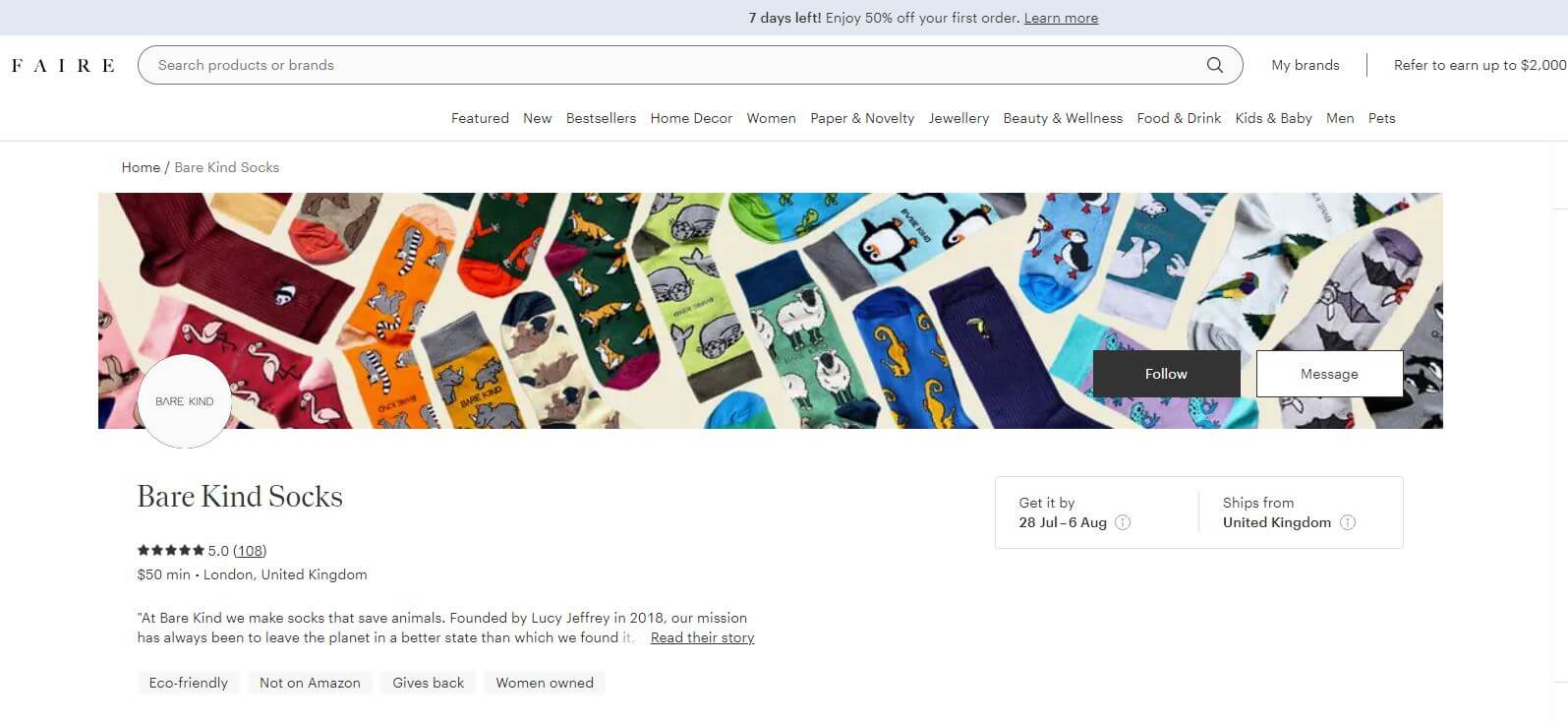
Is Bare Kind finding new wholesale partners direct or finding them through the wholesale marketplaces?
Barekind started out going direct, but quickly converted to using marketplaces, with Faire being their main channel, alongside Creoate and Ankorstore for European sales uses.
These channels are like marketplaces for online retailers to find and buy products from brands. There is generally no cost to list or join the platform, but they do take commissions for the sales delivered. Using Faire as an example, when they bring you a new customer they take a 25% commission on the order, followed by 15% for trailing orders. That’s obviously a significant amount on top of the wholesale discount compared to retail, but you really have to compare that to the cost of acquisition for retail, especially with the rising costs on digital platforms.
However, when you bring customers onto the platform, or can prove that retail partners already on the platform have been your customers in the past, there is 0% commission. Investing in a strategy to acquire retail partners off platform and then convert them onto the platform is a core strategy to consider, as that then gives you a much lower blended cost of sale.
What do you do at Bare Kind to find wholesale partners off-platform?
Lucy’s team is largely focused on the activities to find and nurture wholesale leads. This involves online research to identify them, tools to capture email addresses and then a combination of email campaigns, sending samples, postcards and even on-site visits to build the relationship and get the first order.
What Gross Margin should brands be shooting for on these marketplaces?
There is no single answer to this, because there are many factors that influence the best result. Don’t rush into any particular wholesale price point, but you should consider the following as inputs to find the ‘sweet spot’:
- Your cost of goods, plus platform commission & shipping costs. This forms your baseline.
- Your retail price. You need to allow for a decent markup from your wholesale price so that retailers can make a profit. Usually that will be 200% markup or more. They won’t want to have a higher retail price than you, but you also don’t want them to be competing with you on price, especially if they are an online brand.
- What the competitor price landscape looks like. If there are many other brands selling similar products to you, just like any other marketplace you’ll need to have a competitive price in order to get traction.
- What your channel strategy is. Are you looking for placement in many small bricks & mortar retailers or are you going after the big department stores or chains? Most of the bigger retailers won’t buy through the marketplaces, but that still may impact your pricing decisions.
Is Brand Impact relevant in wholesale, and if so, how do you communicate it?
This is an area that is still evolving for Lucy and Bare Kind, but their belief is that it’s a very important differentiator. More and more retailers are looking for brands with a purpose-based story and strong sustainability credentials.
While it won’t be the only factor in purchasing, it can make the difference in choosing your brand over competitors, especially of you’re doing something different. Importantly, your story will often form the basis of increased engagement after purchase as the retailer seeks help in communicating that to customers in-store. That’s great as it forms a key connection point for building a long-term relationship.
Make sure your sustainability and impact story are clear on your marketplace listing. In addition, consider how you can use packaging to visually tell your story, as well as designing point of sale displays to be eye catching and memorable for buyers.
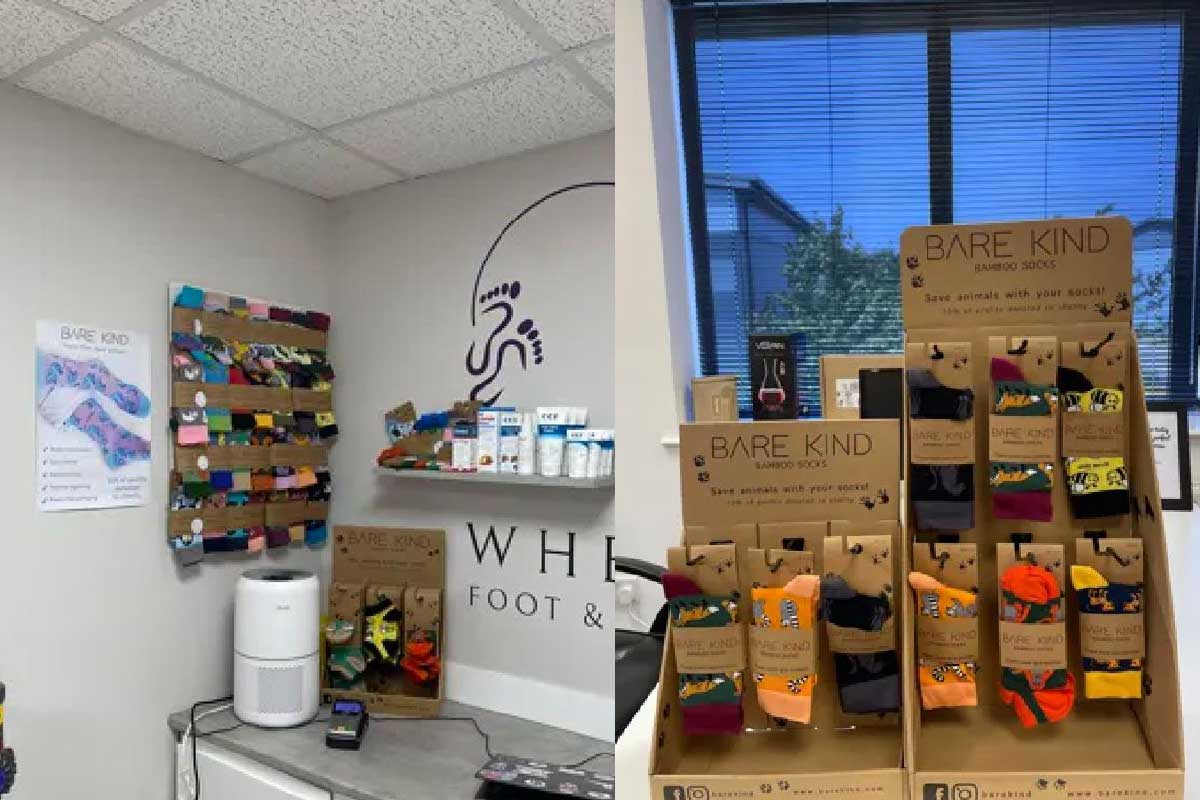
What should you expect regards cashflow with marketplaces?
The cashflow aspect of marketplaces is actually one of the strongest reasons to use them. For example, Faire offer the buyers 60-day credit terms, while they still give you a guaranteed order payout after 30 days. That means you get to offer your customers credit terms without any financial risk, and you don’t need to spend time chasing invoices and waiting for payment before shipping the product.
You can also opt to get an immediate payout at an additional 3% commission. That can run to quite a bit on some orders, but the flip side is that this can be a great way to finance an inventory purchase at slow times of the year, classically when you’re stocking up for Christmas sales. It’s a lot cheaper than inventory financing, for example.
When is the right time for a brand to list on a wholesale marketplace?
The main thing to consider is that retailers are looking for brands that they can build a profitable relationship with, not just a single order. That means you realistically need to have a healthy number of SKUs (Lucy suggests 10 or more) for them to choose from. If you only have a few products, you’ll need to be able to communicate a product roadmap so they can come back and explore more products with you in the future.
Other than that, just get started! There is no need to wait to be perfectly positioned for retail – many retailers have different requirements in any case, and they’ll tell you what they need and you can improve over time.
What sort of products work well on wholesale marketplaces?
Lucy has seen all sorts of successful brands on marketplaces, except perhaps high-value tech products like mobile phones, laptops etc.
Even if your brand makes made-to-order, customised products or hand-made products, you can still sell on the marketplaces. Many small retailers are specifically looking for hand-made, for example, and there is a huge trend towards personalised products too. That being said, you’ll need to manage those relationships, and be very up-front and clear about order delivery times.

Are there any gotcha’s or pitfalls of wholesale marketplaces?
There are a couple of things to consider. Like any marketplaces, you do sometimes get bad customers who will claim non-delivery or damaged products and claim a refund, then still sell in their store.
However, the marketplace support teams can help you with these situations.
Another one that can crop up is where your product gets white-labelled by the buyer. The best way to prevent that is to ensure it is clearly branded.
Finally, consider what your channel strategy is. For example, Bare Kind promote their brand as a ‘not on Amazon’ brand as a point of difference. In that case, your terms & conditions need to clearly outline that, and if there are channels you want to prohibit, or sales terms you require to be upheld, you need to make these clear during the order process.
Where can founders find out more information about wholesale marketplaces?
Lucy has just released an amazing course at wholesaleautopilot.com. Their course promise is to get you to 1000 orders within 12 months!
Inside the course you’ll learn everything from where to find wholesalers, tools to use, how to nurture them, templates for calculating your gross margin and pricing, listing guidance and much more!
